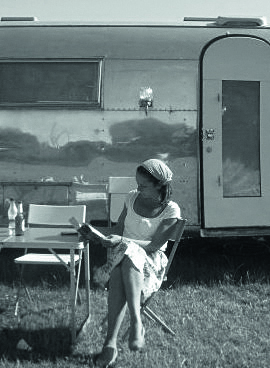While we're enjoying the long-awaited colour from spring bulbs, it can be easy to forget that spring is the best time to plant summer bulbs. Dahlias, gladioli, lilies and more can all be planted in spring for colour through summer and autumn.
You may also like
- When to plant bulbs
- A bulb planting plan to download
- The best spring bulbs to plant in autumn
- How late is too late to plant bulbs
We asked four experts to recommend their favourite summer-flowering bulbs: Jo Thompson, one of the UK's leading garden designers; Carien van Boxtel, a garden and landscape designer known for her designs using bulbs; Charlie Ryrie, founder of The Real Cut Flower Garden, which supplies sustainably grown flowers and Steve Lannin, head gardener at Iford Manor in Wiltshire.
Below is a selection of their top choices.
Jump to
Everything you need to know about when and how to plant summer bulbs
When to plant summer bulbs
Plant summer-flowering bulbs in spring – you will start seeing packets of bulbs in garden centres from late winter.
Where to plant summer bulbs
Most summer-flowering bulbs do best in a warm, sunny spot and well-drained soil. For the best displays in borders, grow in groups or drifts of at least six or seven. If you don't have the right soil conditions, summer-flowering bulbs grow very well in pots – you could add some horticultural grit or sand to the compost before planting to aid drainage. Read our expert advice on growing bulbs in pots.
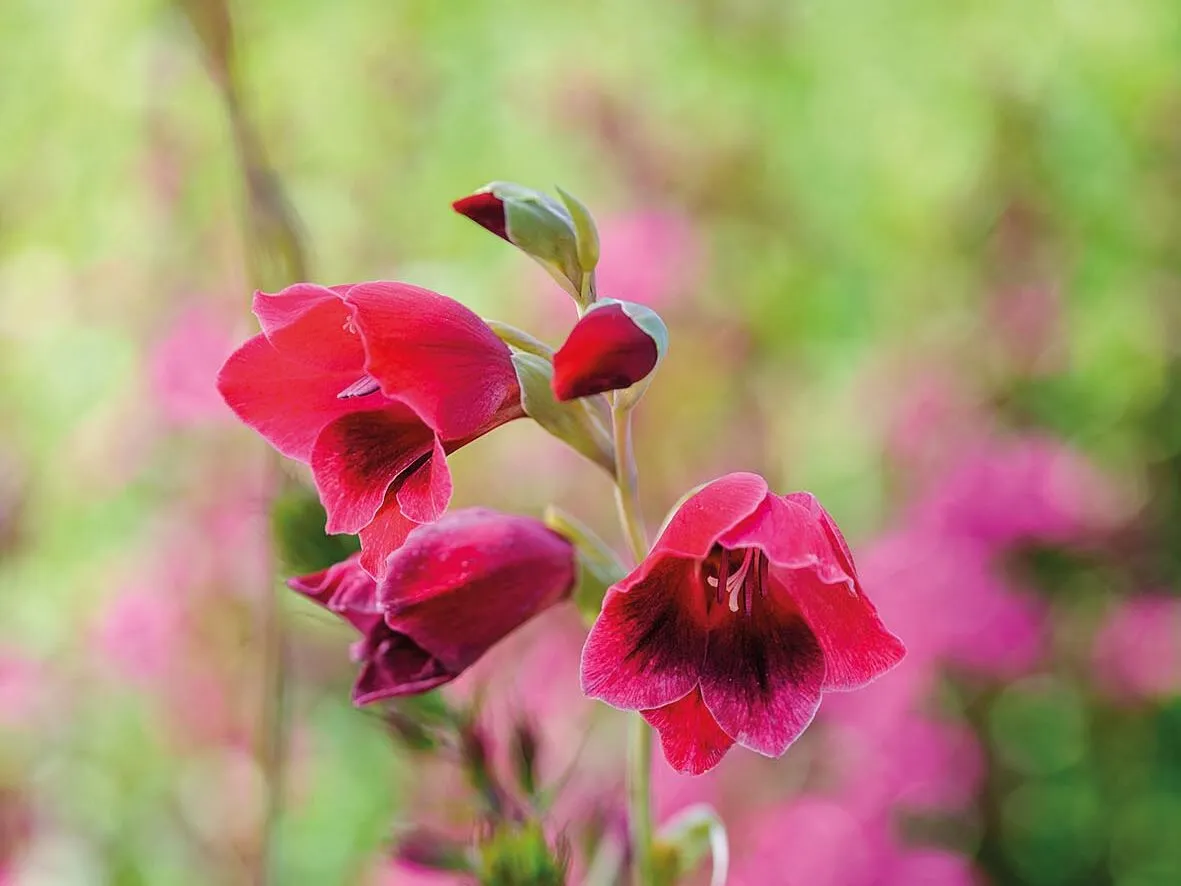
How to plant summer bulbs
Most summer bulbs need planting at two or three times their depth, pointed end up (amarines like to have their nose 'proud' of the soil). Water in well after planting.
Start dahlia tubers off in March. Plant with the central stem pointing up, just below the surface of the compost and water in. Keep them somewhere frost-free until they can be planted outside in late May.
Caring for summer bulbs
The more tender types of summer bulbs, including dahlias and amarines, should be mulched over winter in colder areas, or lifted and stored in a frost-free place over winter.
The best summer bulbs to plant
Dahlias

Carien van Boxtel recommends Dahlia merckii: "It's extremely elegant with small, star-shaped flowers at the end of thin stems, and lovely fine foliage." She also loves Dahlia 'Josie': "Perfect for containers, it flowers early in the season. Its semi- single flowers are a wonderful bright orange and attractive to pollinators."
Jo Thompson recommends Dahlia 'Café au Lait Rosé', bred from the popular 'Café au Lait'. "It has large, double blooms with broad pointed petals in the most charming of pinks." She also loves Dahlia 'Penhill Watermelon': "The huge, glamorously shaggy flowers, with twisting, pointed petals of peachy-pink, are produced in profusion over a long period and last well in the vase, too."
Steve Lannin flies the flag for Dahlia 'Sweet Nathalie', a decorative type with densely petalled flowerheads. "It's the lightest of coral pinks – a lovely cutting flower that blends well with stronger pinks and peaches."
Read about designers' favourite dahlias.
Heights vary. RHS H3, USDA 7a-10b.
Amarines
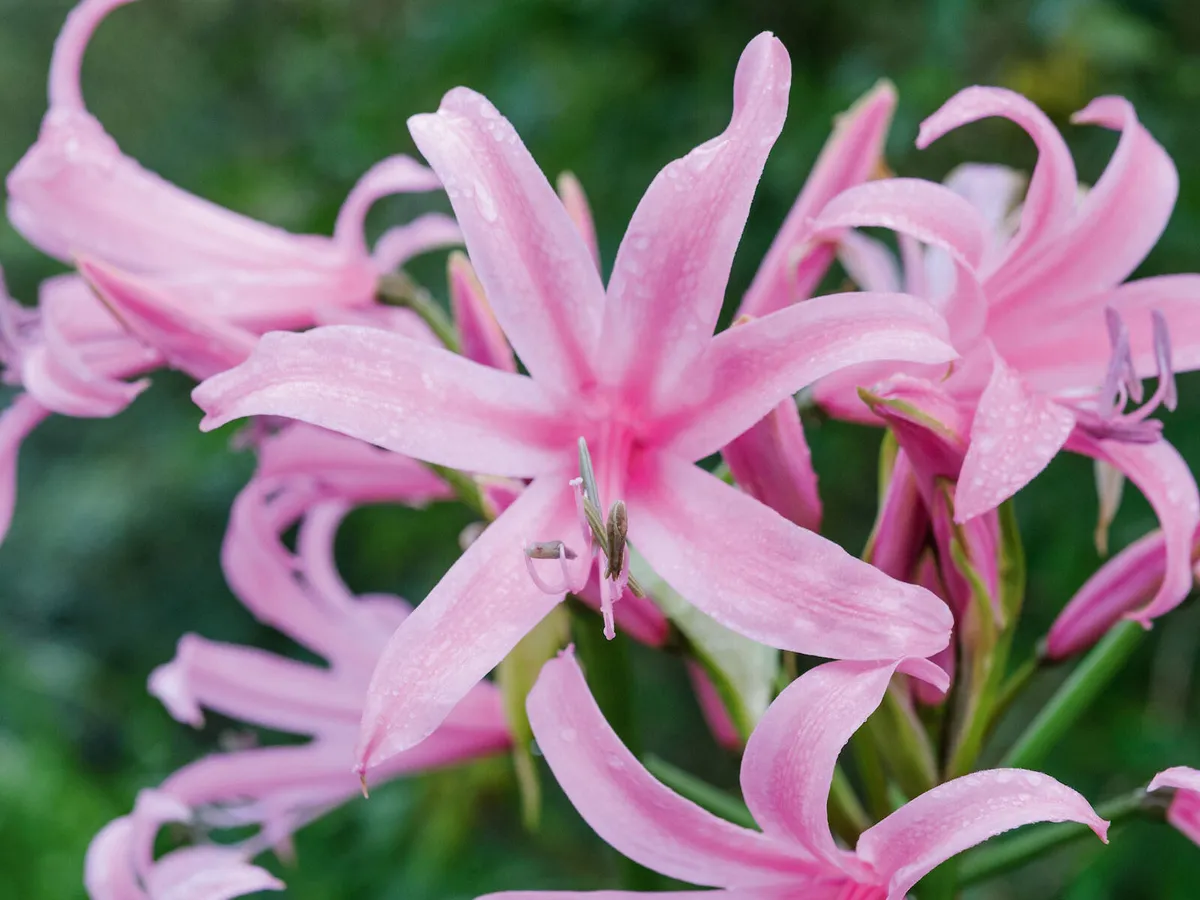
Amarines are a cross between Nerine bowdenii and Amaryllis belladonna. "They are extremely popular as elegant cut flowers," says Carien Van Boxtel. "But I prefer them in borders between grasses and asters, and arranged with other other pink and magenta autumn bulbs, such as Colchicum autumnale."
50cm. RHS H5, USDA 5a-9b.
Read our expert advice on planting nerines and amarines.
Gladiolus papilio 'Ruby'
- Find now through the RHS

While Carien van Boxtel favours the species, Gladiolus papilio ("It has strangely beautiful hues of mauve, salmon, purple and green"), Jo Thompson adores Gladiolus papilio 'Ruby'. "It has sumptuous velvet tones of deep red to burgundy and combines well with grasses or Eupatorium maculatum and red Persicaria."
90cm-1.2m. RHS H4, USDA 4a-10b.
Crocosmia
- Find now through the RHS
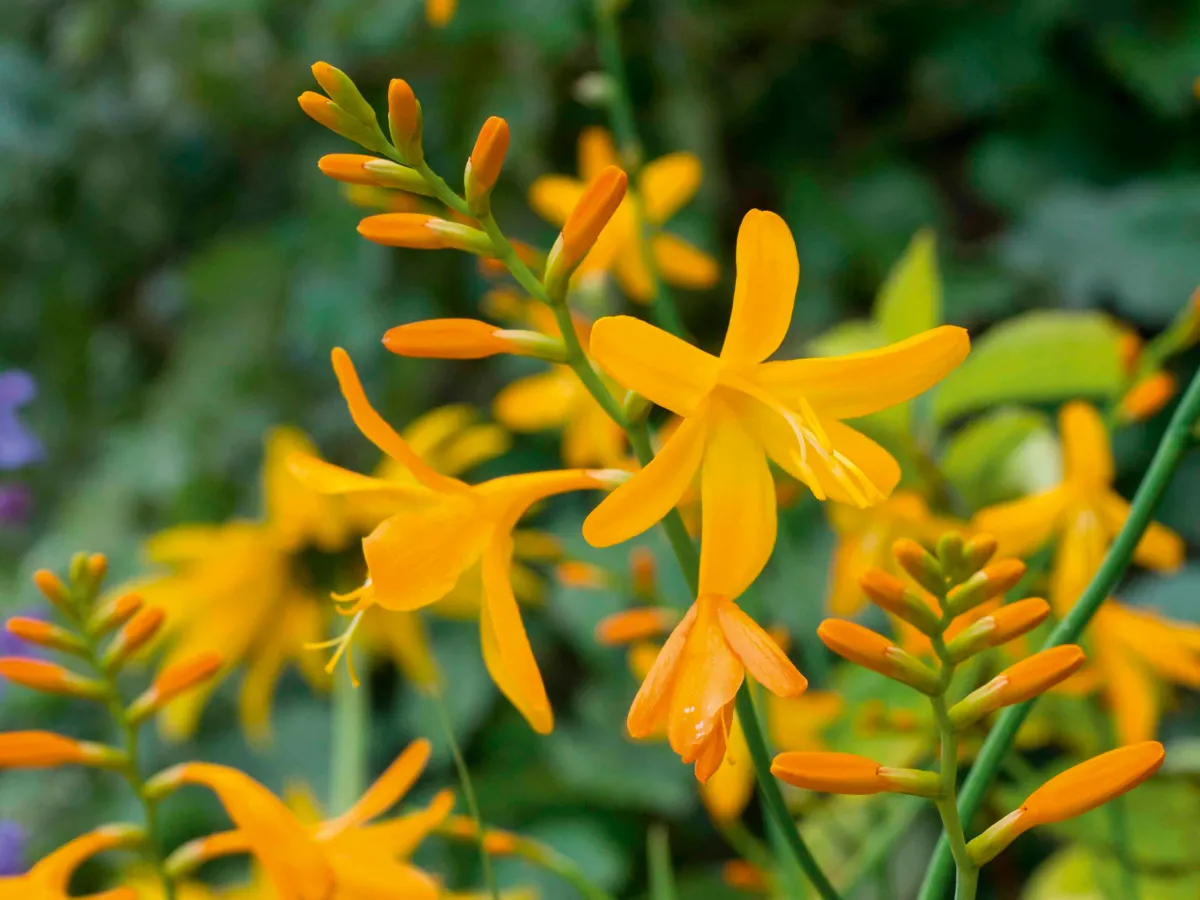
"Crocosmias are fantastic hardy corms that will provide lovely foliage and flowers as well as decoratative seedheads," says Carien van Boxtel. "The bold reds and orange shades are better known, but I love a yellow, both the garden and the vase." She particularly recommends Crocosmia x crocosmiflora 'George Davison'.
75cm. RHS H5, USDA 5a-9b.
Discover how to grow crocosmia
Martagon lily

"Turk's cap lilies (Lilium martagon) are often grown as woodland plants in part shade, but they will also tolerate sun and look great when naturalised in open grass," says Jo Thompson. The species produces an abundance of small, pinky-purple downward-facing flowers with reflexed petals.
1.5m. AGM. RHS H6, USDA 3a-8b.
Agapanthus
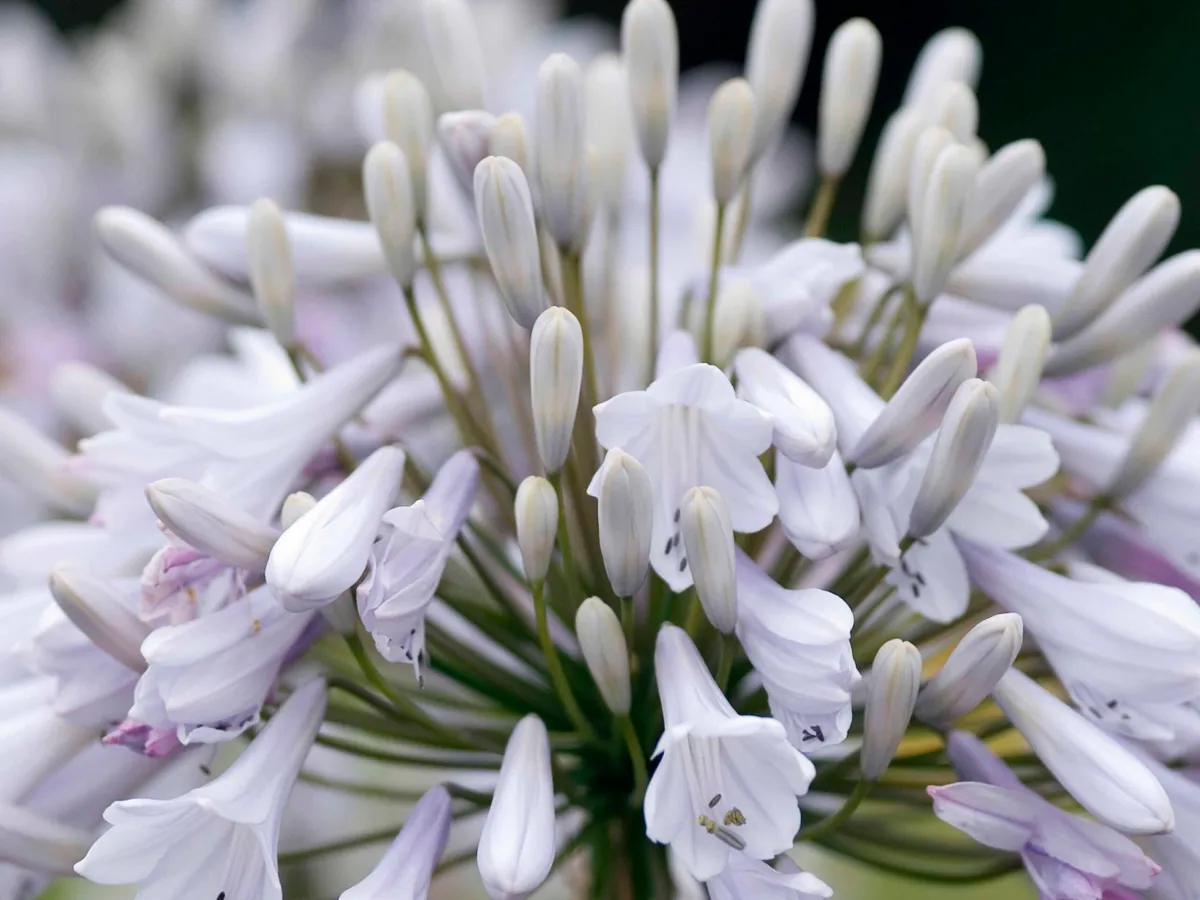
Two of our experts recommended agapanthus in shades of white instead of the usual blue. Steve Lannin picked Agapanthus 'Windsor Grey': "It's greyish-white, with a subtle lavender blue blush to the base of the flower." Meanwhile Charlie Ryrie plumped for Agapanthus 'Headbourne White', a robust, white-flowered deciduous form which is borderline hardy. "The big domed blooms, like snowballs, top straight stems in late summer."
Read more about the best agapanthus to grow in your garden.
1m. RHS 4, USDA 3a-8b.
Tulbaghia
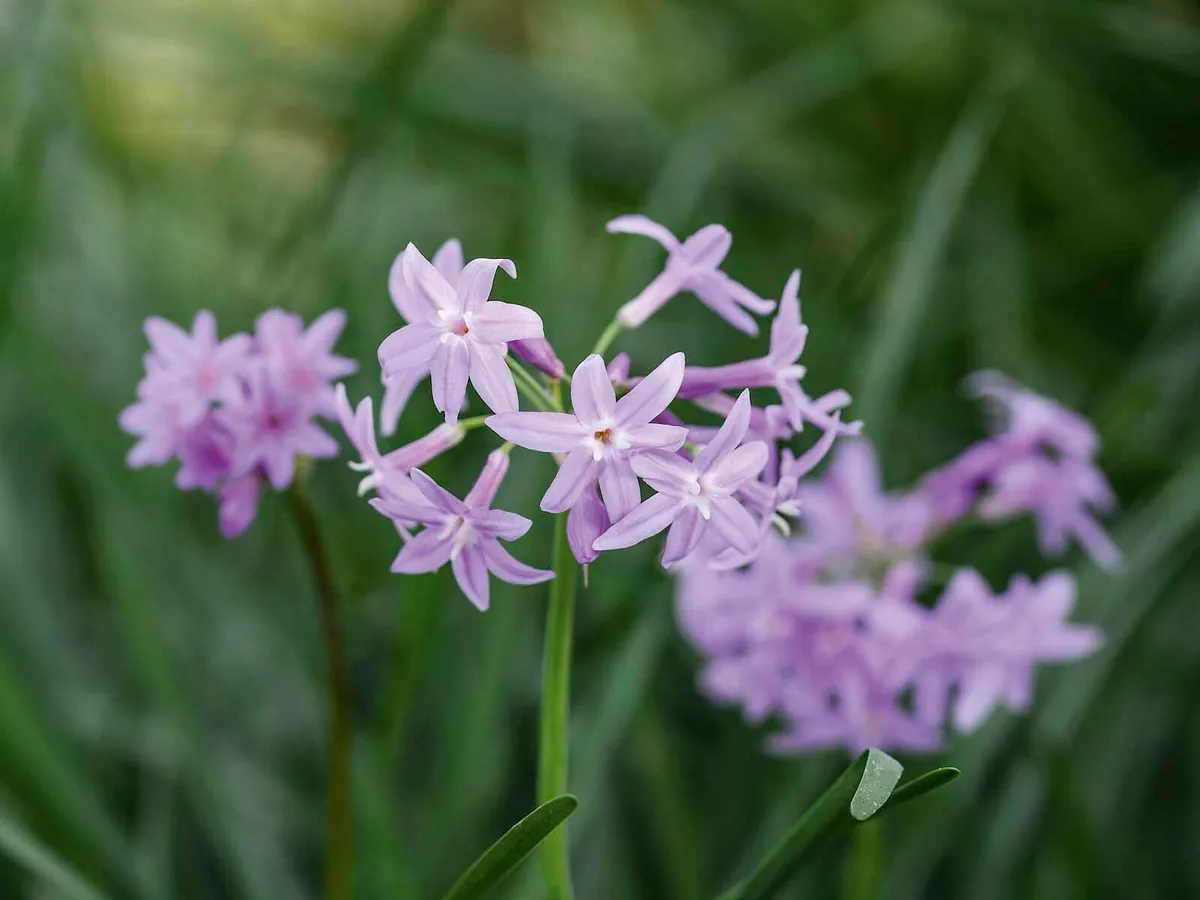
Steve Lannin recommends Tulbaghia violacea: "Pale, pinkish-mauve flowerheads held in umbels of up to 20 individual flowers, amid grass-like foliage, from June to September. Hailing from South Africa, these bulbous plants need full sun and well-drained soil."
40cm. AGM. RHS H3, USDA 7a-10b.
Dierama
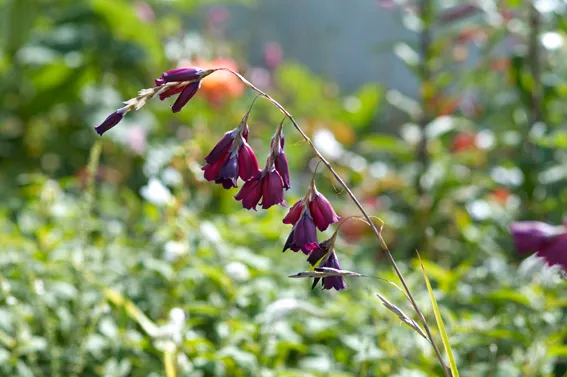
Steve Lannin loves Dierama pulcherrimum 'Merlin'. ''It has grass-like foliage coupled with sultry, black-red flowers that dangle from long, thin arching stems and dance in the wind," he says. "Ensure full sun and moist but well-drained soil."
1m. RHS H4, USDA 8a-10b.
Here's more on dierama
Liatris spicata
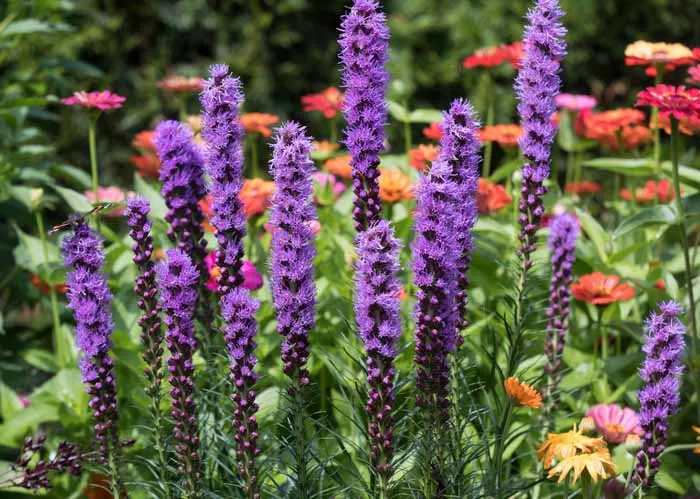
"Liatris spicata has tall flower spikes that bear distinctive, tufted, bottlebrush-style flowers in a deep mauve," says Steven Lannin. "Fresh growth appears in spring (keep an eye out for hungry slugs) with flowers in late summer. Liatris spicata is best planted in full sun. It's attractive to bees and butterflies and a good cut flower."
80cm. RHS H7, USDA 3a-3b.
Ranunculus asiaticus
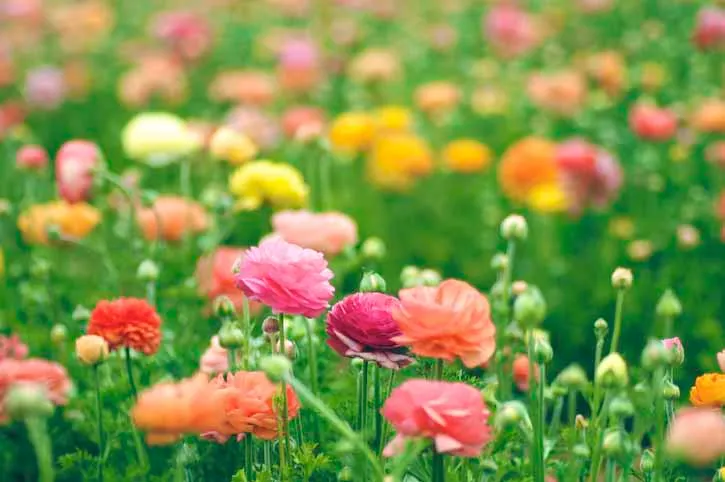
"The double-flowered forms of Persian buttercups, with their ruffled layers of crepe-paper like petals, are often planted to overwinter," says Charlie Ryrie. "But are very successful if planted in late winter for summer flowering, as long as there's still some cold weather on the horizon."
45cm. RHS H4, USDA 4a-10b.
Ornithogalum saundersiae

"The best star of Bethlehem for cutting, lasting for weeks in the vase," says Charlie Ryrie. "It produces dense clusters of showy, star-like creamy-white blooms with black centres, which perch atop tall, straight stems."
90cm. RHS H2, USDA 10.
